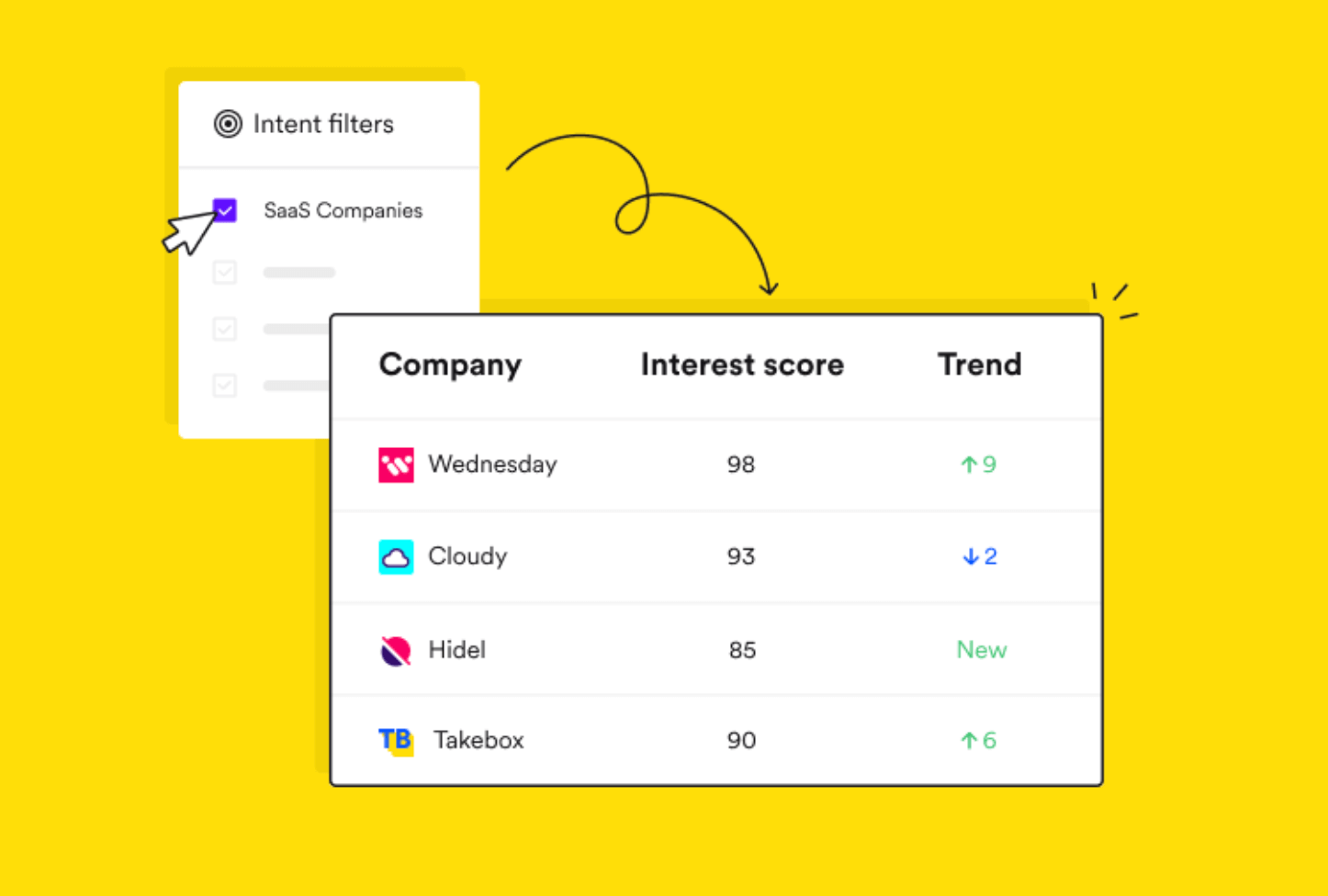Upselling and cross-selling are everywhere. “Do you want cheese on that?” Upsell. That pack of gum at the checkout? An easy cross-sell. But most of the time, we’re working with stuff that’s harder to sell than some tasty snacks. Companies that use these selling tactics can have up to a 60-70% repeat purchase rate (compared […]
Upselling and cross-selling are everywhere. “Do you want cheese on that?” Upsell. That pack of gum at the checkout? An easy cross-sell. But most of the time, we’re working with stuff that’s harder to sell than some tasty snacks.
Companies that use these selling tactics can have up to a 60-70% repeat purchase rate (compared to a 10% rate for companies that don’t upsell or cross-sell). Not to mention that sweet, sweet extra revenue they can help rake in– you could get a 30% increase in revenue just from upsells and cross-sells. Plus, gaining new customers can be really expensive. When you’re trying to do more with less, selling to your existing customers makes sense.
But if you bring up an upsell or cross-sell at the wrong time, the sale could come crumbling down. How can you know that the time is right?
What is the difference between upselling and cross-selling?
Okay, so before we get ahead of ourselves, let’s make sure everyone’s all clear on the jargon. In case you didn’t know, upselling and cross-selling are often talked about together, but they are not the same thing. Let’s get into the bare-bones basics.
With an upsell, you’re offering the customer an upgraded or premium version of something they’re already planning to buy. You’re stacking something on top of that purchase instead of next to it. An upsell is like going from a hamburger to a cheeseburger, or getting whipped cream and a cherry on top of your sundae.
Cross-selling is when you offer a product or service that is separate from – but complementary to – what the customer plans to buy. So instead of piling more on the same product, it’s adding something else for extra value. Think getting a margarita to go with your tacos (if you can’t tell, we’re already daydreaming about dinner after work).
The old way of identifying upselling and cross-selling opportunities
Some studies say that only 5-15% of customers are open to cross-selling efforts. But then other research says that using either cross-selling or upselling can help increase customer loyalty (74% of customers are even more likely to become return customers after a positive experience).
So what gives? A lot of the resistance is due to bad timing or a clumsy approach. There are some tried and true ways to figure out that the time is right to go for the extra sale.
Those techniques can include:
- Regular check-ins to feel out satisfaction
- to identify the right timing
- Active listening for cues that the customer needs more
- Asking the right needs analysis questions
The new way: discovering hidden opportunities for cross-sells and upsells
All those methods above work fine. There’s a reason that they’re recommended again and again. But they have their problems.
For one, a lot of those techniques mean you need to passively observe and wait for the right moment to strike. It works, but it’s not exactly exciting or easy, right?
And another thing: those tactics all depend on your customer actually knowing what’s going on in their organization. Let’s be real, even small businesses and startups can be as siloed as the Midwest. And enterprises? The silos in those bad boys run deep. It’s not at all uncommon for two teams to need the same thing – and for one of those teams to have an awesome solution in place that the other one knows nothing about.
But what if there was another way you could identify potential opportunities for cross-selling and upselling (even if your client doesn’t know they need it yet)? Something a bit more proactive that you can add to your tool kit alongside those important soft skills? If you want to find unknown opportunities outside of your regular upsell/cross-sell process, there’s a tool you might not have thought about: intent signals.
If you thought that intent data was just to help you find new customers, then we’ve got some exciting news for you. Intent isn’t just for prospecting. You can also monitor the Intent of your customer base to provide them (and you) even more value.
With Intent, you have a way to figure out if customers are searching for additional solutions you already offer. Once you see it, you can snag that opportunity right when they’re thinking about it– instead of waiting for it to eventually come up. What’s not to love about that?
How to use intent data to identify unknown interest
So that sounds great and all, but how do you do it? Well, it turns out that identifying these opportunities with Intent is deceptively simple.
As you might already know, Intent helps you pinpoint what to sell and when. Instead of spending time, energy, and money on ineffective campaigns, you can focus on the people who are sending out signals that they need attention.
Here’s how it works for an upsell or cross-sell opportunity: keep a pulse on your current customer base for intent surges (high intent scores) for topics based on your offerings. Are there accounts surging for topics that are related to something they’re not currently buying from you? That’s your opportunity for an upsell or cross-sell pitch, depending on the topic that’s surging. Once you’ve proved your value to the customer, keep an eye out for those specific topics that could give them additional value. Armed with your extra insights, you can remind them of the other products you offer and talk about the benefits of buying from a single provider. You’ll wow them with how good you are at knowing just what they need, when they need it. From there, that extra sale should be easy.
And remember that siloing issue we mentioned earlier? Intent helps with that too. They might even need your Intent-driven insights to tell them what’s actually going on at their company. Then you can use that data to proactively solve their problem and swoop in like a hero.
Let’s say you offer email security software. Instead of just talking to them during the renewal call about whether they might need more seats, you can point out a need. If your customer’s Atlanta branch is surging for email security software but you have a customer using your product in the San Diego office, you have a golden opportunity. You can offer an expanded contract so that the Atlanta office can get in on the good stuff. They won’t have to jump through procurement hoops when they can just use a vendor that’s already approved and set-up. And you can get that coveted upsell… it’s a win-win. Plus, your tool gets even more entrenched with the customer, meaning better revenue for you.
The tool that makes this possible
Okay, this is all great stuff. But you can’t just google intent data and get the information you’re looking for; you need a tool for it. That’s where we come in. Lusha’s Intent makes it easy. You can look into surging intent topics at the company level and then drill further down. Which ? And what relevant contacts work at those locations? From there, all that’s left to do is just reach out to your customer and make a killer sale.
That’s basically it – you can use our intent data to look for opportunities among your existing customers that are hiding right under your nose. And just to drive the point home, it really is a good tactic to increase your revenue while minimizing extra costs. Did you know it costs 5 times more to get a new customer than to keep one? With that in mind, it’s an easy choice to keep exploring ways you can add value to the customers you already have.
Key Takeaways
- When done right, cross-selling and upselling contribute to customer loyalty and drive up your revenue.
- Common methods for identifying cross-sell and upsell opportunities rely on your customer knowing exactly what’s going on at their company, which can be difficult with siloed organizations.
- Intent data is a powerful way to uncover hidden opportunities for upsells and cross-sells so you can be more proactive about selling to your current customer base.




